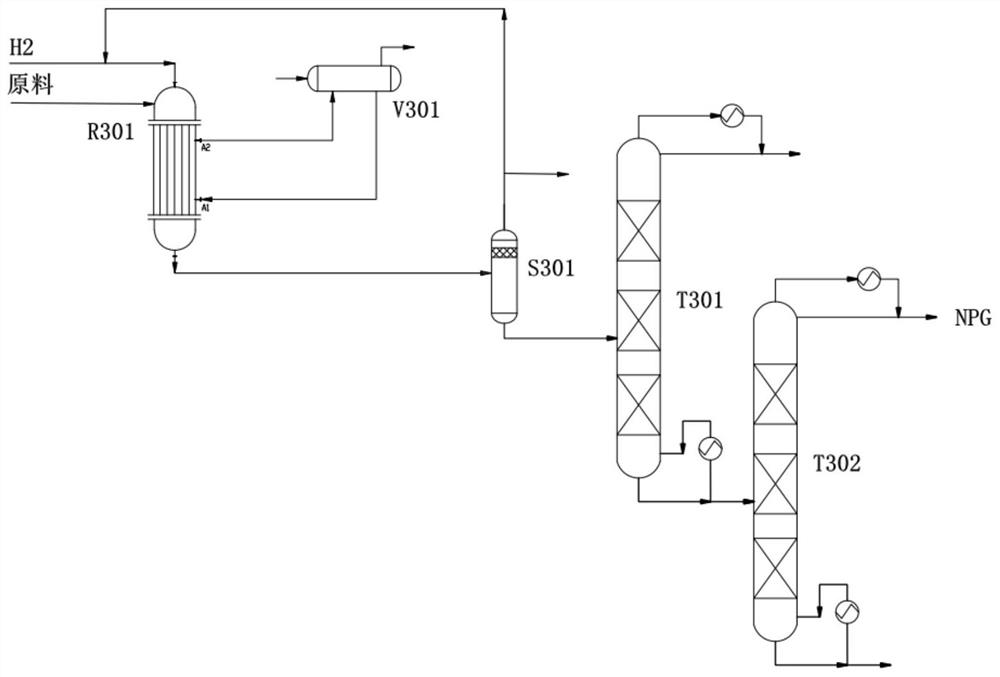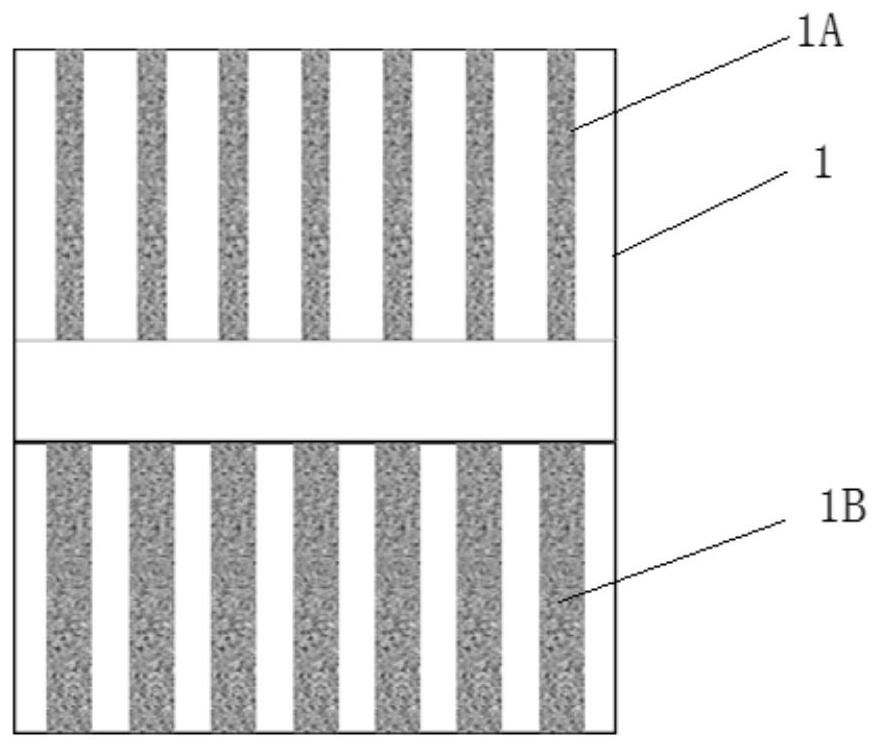Process for producing neopentyl glycol by continuous catalytic hydrogenation
A neopentyl glycol, catalytic hydrogenation technology, applied in the field of fine chemicals, can solve the problems of high equipment investment and operating costs, affecting product yield and quality, complex catalyst system, etc., to achieve good anchoring and stabilizing effects, Reduce subsequent separation costs, low equipment investment and low operating costs
- Summary
- Abstract
- Description
- Claims
- Application Information
AI Technical Summary
Problems solved by technology
Method used
Image
Examples
Embodiment Construction
[0026] process such as figure 1 As shown, the hydrogenation raw material of hydroxypivalaldehyde raw material produced by organic amine catalyzed isobutyraldehyde and formaldehyde, after simple separation of unreacted light components such as isobutyraldehyde and formaldehyde, the corresponding composition is shown in Table 1. The above-mentioned hydrogen and the raw material (the molar ratio of hydrogen to aldehyde is 1.1-3:1) directly enter the transfer heat hydrogenation reactor R301 (with steam drum V301) from the upper opening of the reactor to undergo hydrogenation reaction, and the hydrogenated product is firstly hydrogenated. Hydrogen outlet separator S301 gas-liquid separation, the separated gas phase components mainly contain hydrogen, part of which is returned to the inlet of transfer heat hydrogenation reactor R301 for recycling, and the rest is discharged as relaxation gas; the separated liquid phase product is then delightened The neopentyl glycol product with a ...
PUM
 Login to View More
Login to View More Abstract
Description
Claims
Application Information
 Login to View More
Login to View More - R&D
- Intellectual Property
- Life Sciences
- Materials
- Tech Scout
- Unparalleled Data Quality
- Higher Quality Content
- 60% Fewer Hallucinations
Browse by: Latest US Patents, China's latest patents, Technical Efficacy Thesaurus, Application Domain, Technology Topic, Popular Technical Reports.
© 2025 PatSnap. All rights reserved.Legal|Privacy policy|Modern Slavery Act Transparency Statement|Sitemap|About US| Contact US: help@patsnap.com



